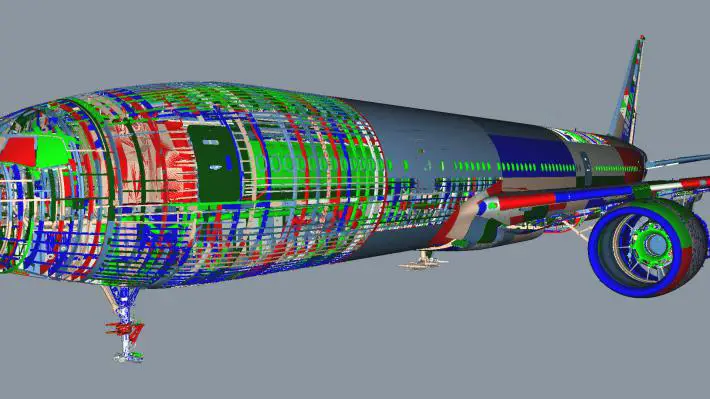Nowadays it’s no secret anymore that products getting more and more complex regardless whether it is an aircraft, a medical device, a car, a mobile phone or just parts of them. It’s also no secret that many people from different departments – or even companies – having different educational background are involved in the development of such products. Ideally their efforts should have a common base: the requirements describing the product to be built.
There is no doubt that proper requirements management is key to the success of projects. We all know since more than 20 years that it also helps identifying possible issues, problems and mistakes earlier in the development cycle saving us a lot of effort and money fixing them. So why most companies still don’t use professional requirements management solutions? Why they stick to Word and/or Excel based approaches which only work well up to a certain level of complexity?
It is widely accepted that professional requirements management solutions would increase efficiency and bring tremendous benefits to the whole development lifecycle over time thus saving time and money. Nevertheless you will often get the following answer: “We don’t have the time now to introduce a new tool because our project is under time pressure.” I’ve seen dozens of projects in my life but there wasn’t a single one not having time pressure. One thing is as sure as death and taxes: complexity will continue increasing as well as time pressure will not become less if you don’t start thinking about improvements in your development process!
Table of Contents
The Requirement Management tool Market
The market for Requirements Management tools looks heavily over-saturated today. And what is amazing is that new players are still constantly entering the market. However, just as quickly some of these players vanish from the market. Free trials seem to be becoming a standard practice for new tools and prices for web-based software are falling fast. There is a widening gap between the heavyweight, closed environment, local database traditional RM tools and the lighter and cheaper offerings which often also include free integrations with other software (including old RM tools). Requirements tools are becoming simple to download and install. This effort no longer requires complex database setup done by an administrator.
The trend towards a standard requirements interface is gathering momentum, allowing users to use requirements information across multiple tools, some of which are not requirements management tools.
Most RM tools are focused on either requirements definition or requirements management. It is important that potential customers understand the different between the two activities. Requirements definition is focused on gathering user needs and analyzing these needs to create a consolidated set of user requirements. This is just the beginning of the requirements effort. 90% of organizations today are still using Word to document their business and user requirements. Manyrequirements management tools today focus on providing a way to leverage existing requirements information that is provided outside of the tool, in particular a tool like Word. Other requirements management tools that are focused on this effort provide more functionality related to the elicitation process and provide methods to document actor and object names, create use cases, and document high level test plans.
Requirements management today involves very complex models to handle conditions such as multiple variations on the same basic project, reuse of components across projects, variants in reused components, and multiple release of each project.
Limitation of Word and Excel to manage requirements
Although MS Word and MS Excel cannot be seen as requirements management solutions, in practice many organizations use them to manage requirements. Why that?
Requirements are very often of textual nature, so taking a word processing tool seems obvious. In most cases MS Word is already installed and users are – more or less – familiar with it. Also, people still believe requirements must be structured by means of documents which are sometimes also requested by certain certification authorities.
But if you start categorizing your requirements in different ways, for example by priority, customer, country, product release, etc. you may find MS Word improper. Now MS Excelseems to be the better choice because attribute information can be added to the requirements in separate columns and you can even filter your requirements according to certain criteria, but unfortunately you lose the textual description and formatting capabilities.
Seems like a combination of MS Word and MS Excel is feasible to do requirements management. But: Have you ever tried to:
- Work in parallel on the same document?
- Find out who has done what changes and why?
- Find out which other information (more detailed requirements, test cases, …) in which other documents is affected by an upcoming change?
- Find out which of the information in your document is potentially out-dated due to changes done somewhere else?
Professional requirements management solutions provide quite a lot of additional capabilities, like
- logging the history of changes
- the ability to create and analyze relationships between atomic information items (requirements, use cases, test cases, …)
- suspect relations
- …
Why using a Requirement Management tool in the Aerospace & Defense Industry?
Requirement management tools are time saver and can avoid you serious mistakes on the conception of any Aerospace & Defense systems. If selected well, the tool will provide you a good vision of the current progress on the design, test and informed you on the current issues. It should handle the traceability on your project and automatically generate the different certification documents needed. Integrated with your test equipment and test softwares, the requirement management tool should highlight any impact of a test result at system, hardware and software level. These tools are real time saver compared to the traditional utilization of excel and word to manage your requirements. With a deep linking between the different requirements (system, hardware, software) and the associated tests, you considerably reduce your risks of human mistake on complex multi-requirements projects. Furthermore, current softwares have significantly improve their user experience and uploading requirements from excel or word documents is a common feature.

Top 5 Requirements management tools that best support the DO254 and DO178
In this article we are going to focus on the innovation that these softwares provide to the Aerospace & Defense industry highlighting their capabilities to assist with the DO178 and DO254. The FAA has published an handbook summarizing the best practice in the design of avionic systems. We believe that it is an interesting ressource to have in addition of the following list of the best requirement management tools for the Aerospace and Defense industry.
1- Visure
Visure requirement management tool is for us the best software for Aerospace & Defense projects. The software integrates dedicated templates for DO254, DO178 standards (also ISO26262, IEC62304, IEC61508, CENELEC50128, FMEA, SPICE, CMMI) which will guide the user with ease toward the certification. The tool is fully integrated with MS excel / Word for uploading the requirements at any time in the design phase and to automatically generate the traceability reports needed. We appreciated as well in our rating the integration with all major tools such as: DOORS, Jama, Siemens Polarion, PTC, Perforce, JIRA, Enterprise Architect, HP ALM, Microfocus ALM, PTC, TFS, Word, Excel, Test RT, RTRT, VectorCAST, LDRA. Features integrates as well full traceability, risk management, bug tracking, requirement quality checker and support for Agile, V model and Waterfall development processes. Overall, we have a great features and a really competitive licence cost which makes it, for us, the best solution currently available on the market for Aerospace & Defense projects.
2- Jama Software
Jama Software shines with its intuitive interface and the strong collaboration ability that the engineering teams have while using the tool. The software provides as well live traceability feature and provide evidences to comply to the different Aerospace and Defense standards DO-178C, ARP-4754, DO-254 and DO-170. Jama Software is widely used by major Defense companies such as Boeing, BAE Systems, Thales,…
3- IBM Doors
IBM Door is the market leader on requirement management segment with customers in all type of industries including the Aerospace and Defense. The tool is then widely used for Aerospace and Defense standard such as DO178 and DO254. The tool is very powerful and provide traceability, custom dashboard, extension API, … As a leading market player, your great software comes at a cost which is significantly higher than its competitors.
4- Seimens Polarion requirements
Siemens developed a pretty collaborative tool that is 100% web based supporting offline work. The import or export of traceability documents is pretty intuitive using the wizard module. The tool provide the traditional features such as versioning, dashboards, an open API, workflow traceability management. The tool bring the most of its value when used in the Siemens ecosystem and specially with their PLM. As a requirement management tool it is a powerful platform but we are missing a better integration for Aerospace and Defense standards.
5- ReQtest
This tool has a pretty intuitive interface. It provide a full requirements traceability and is perfectly compatible with Agile development process. It does provide as well bug tracking capabilities and an easy integration depending on your platform. We regret that the tool doesn’t provide more specific function for the Aerospace and Defense industry such as support for the DO178 and DO254. Furthermore, ReQtest haven’t been adopted by Aerospace and Defense customers as you can see from the list of companies displayed on their website. Nerveless, it remains a pretty competitive tool with powerful capabilities.
This article is part of our innovation section. We believe that it is important to share technologies that can greatly benefit the development of the industry. Feel free to get in touch if you have any comments or if you want to propose a new innovation topic.
Read our other software reviews
One of Aerospace Export’s main guideline is to promote innovative content targeting the Aerospace and Defense industry. Following this guideline, we have been working on few other software reviews that you could directly access here:
Get more information on how we review the different tools
CONTACT US TO REVIEW YOUR TOOL
If you are a tool editor and believe that your tool should be mentioned in our review, please send us a message below and we will get in touch with you. We are constantly updating our ranking with the tools that we believe to be the more relevant for the Aerospace & Defense market.
Learn More









